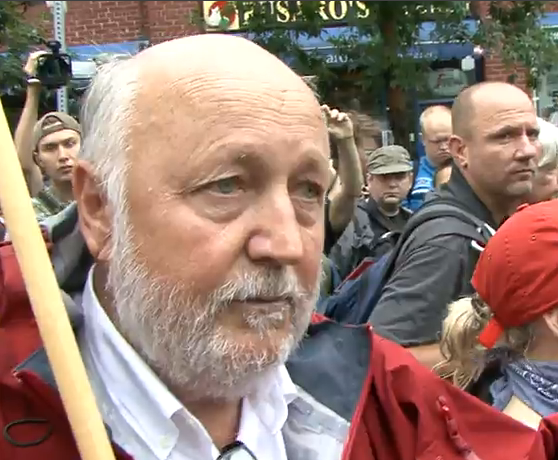Three million dollars in prize money is up for grabs during this week’s Rogers Cup at York University. A few tennis stars will do well for themselves.
Beyond the winning players, few benefit more from this event than Canada’s largest cable television provider. As the tournament’s lead sponsor, Rogers garners untold publicity from this high-profile sporting event. The company spends handsomely to be associated with this internationally-known glitzy affair.
Rogers’ sponsorship of this exciting sporting exhibit should not distract us from the company’s seedier side. Only kilometers from the tennis spotlight, about 300 technicians who install Rogers services in the GTA are confronting another side of the company’s business strategy. After unionizing last year, the technicians have been on strike for nearly two months in a bid to secure a first collective agreement.
Employed by DHT and INTEK, contractors for Rogers, the technicians are seeking a contract that includes a daily minimum wage of between $110-130 or $11-13 an hour based on a standard 10-hour shift. Paid on a piece work system, technicians often earn less than the minimum wage due to lack of scheduled work. Faulty equipment also results in employee penalties for performance based metrics. Some days a technician can sit for a full day without work. The workers get no overtime and limited seniority rights. Considering these conditions, it is no surprise there is a huge employee turnover rate of as much as 50 per cent.
With many employers, concluding a first collective agreement can be difficult but this conflict has turned into a struggle over the workers right to a union. The employers have made it clear they are not fans of collective bargaining and an anonymously registered website is calling on employees to decertify a union they joined a year ago.
Rogers has tried to wash their hands of this labour conflict. Company spokeswoman Patricia Trott told the Financial Post three weeks ago “All these techs work for third-party contractors; we have nothing to do with the negotiations.” But the company’s claim does not withstand scrutiny. The contractors are dependent on Rogers for their business and it is Rogers that is responsible for dispatching the technicians. They also go through Rogers Cable College and Rogers can determine a technician’s employment status.
Despite making more than $10 billion in profit over the past five years, Rogers has contracted out thousands of jobs in a bid to drive down wages and conditions.
Rogers has a moral obligation to make sure those installing its products are treated fairly. But it goes beyond that. The spectrum Rogers uses for its wireless signals is a public resource that ought to include certain social obligations such as treating employees decently.
The CEP will not to let Rogers wash their hands of these workers’ plight. During the finals of the tennis tournament the union will be setting up an information picket at the Rogers Cup. We will to contrast what Rogers spends and what the top tennis players make with the striking technicians demands. The winner of the tournament, for instance, will receive $525,000. On hand to present the cheque will be Rogers CEO Nadir Mohamed, who has made $17 million over the past two years.
In light of these sums of money, does anyone believe the striking technicians’ demand for an $11-13 an hour daily minimum is unreasonable?
Dave Coles is the National President of the Communications, Energy and Paperworkers Union of Canada (CEP).



